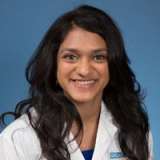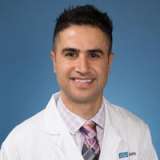Seed Grants 2018

Microbiome profiling of chronic liver disease to develop microbial biomarkers for disease etiology and progression to fibrosis
Fellow: Tien S. Dong, MD
Mentors/PI: Jonathan P. Jacobs MD, PhD; Joseph Pisegna, MD
Obesity is a rising problem in America and non-alcoholic fatty liver disease is becoming the number one reason for cirrhosis and liver transplantation in the United States. It is estimated that 1 in 3 Americans are obese and out of those that are obese, as many as 60% may have non-alcoholic fatty liver disease (NAFLD). How and why fatty liver disease develops in some patients and not others is a very active area of research. There is an emerging body of research that supports a role for the gut microbiome in the development and progression of chronic liver diseases, in particular non-alcoholic fatty liver disease. By using non-invasive imaging of liver fibrosis, we will categorize the microbial differences between patients with minimal fibrosis and advance fibrosis across varying etiology of liver disease. Our goal is to demonstrate that the microbiome can be used to predict etiology of liver disease as well as stage of fibrosis independent of the cause of liver disease. This may lead to new avenues of research focusing on these microbes and their products, and how they may affect specific diseases as NAFLD as well as generalized mechanisms for liver disease progression to fibrosis. Improved understanding of how the microbiome is involved in the pathogenesis and progression of chronic liver disease could lead to the development of novel biomarkers and potentially microbiome-directed therapies that could improve outcomes for patients with chronic liver disease.

Evaluating the cytokine profile of patients with ulcerative colitis
Fellow: Nimah Jamaluddin, MD
Mentors/PI: David Padua, MD, PhD; Jenny Sauk, MD
Inflammatory bowel disease (IBD) is a chronic disease that is caused by a dysfunctional immune system leading to defective gastrointestinal function with altered inflammatory cytokine expression. In the past fifteen years, the landscape of IBD management has dramatically changed with the introduction of biologic therapies such as infliximab, adalimumab, and vedolizumab. These new therapies have improved the remission rates and the quality of life for IBD patients. However, a significant portion of patients either never respond to these therapies or lose response over time. Since inflammatory cytokines are implicated in IBD pathogenesis we aim to explore the cytokine profiles of ulcerative colitis patients that developed active colitis after a period of remission. We will perform this study using intestinal specimens from the UCLA IBD Biobank. We plan to measure cytokines levels produced both before and after simulation using multiplex cytokine profiling in both patients that develop active inflammation and those that stay in remission. We hope to identify cytokine patterns in patient subsets that developed active disease. These results could be used to develop a predictive model of disease activity.

Phenotyping of IBD patients with respect to clinical characteristics, stress measures and gut microbiome
Fellow: Amir Kalani, MD, PhD
Mentors/PI: Emeran A. Mayer, MD; Jonathan P. Jacobs MD, PhD

Urgent colon capsule endoscopy for lesion localization and diagnosis in patients with severe hematochezia
Fellow: Neil Marya, MD
Mentor/PI: Dennis Jensen, MD

Endoscopic ultrasound (EUS) versus computed tomography (CT) scan esophagogastric junction outflow obstruction (EGJOO), pseudoachalasia, and other esophageal motility disorders
Fellow: Andrew Su, MD
Mentors/PI: Jeffrey L. Conklin, MD; Alireza Sedarat, MD
High-resolution esophageal manometry has become the gold standard in the diagnosis of esophageal dysmotility disorders. Achalasia is one of the most well-known esophageal dysmotility disorders in which we are now able to identify and treat with increasing accuracy and efficacy. However, if clinical characteristics increase the suspicion for pseudoachalasia, further evaluation with endoscopic ultrasound (EUS) or computed tomography (CT) scan is recommended to rule out other etiologies that could be contributing such as malignancy. The same recommendation holds true for esophagogastric junction outflow obstruction (EGJOO). There remains no consensus on whether to proceed to EUS or CT first, or to perform both simultaneously. Furthermore, the yield of both diagnostic studies has not been directly compared. Using data from our esophageal motility center, we aim to perform a retrospective study directly evaluating the yield of EUS versus CT scan in evaluating esophageal dysmotility disorders, in particular, achalasia and EGJOO. We hope that our results will help guide clinical practice in terms of which diagnostic study to perform first when evaluating a patient with these common esophageal motility disorders.